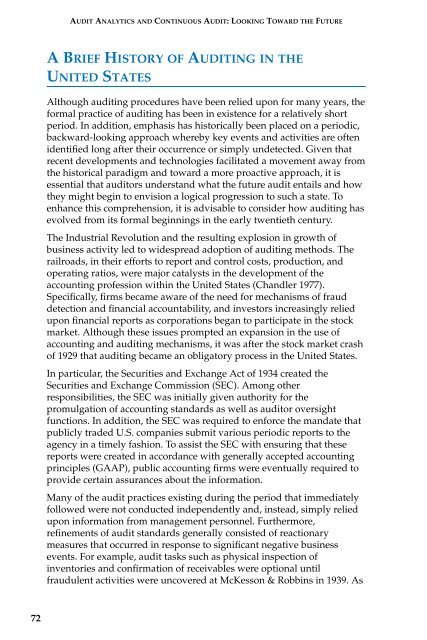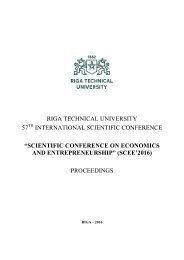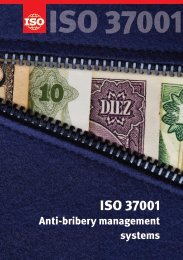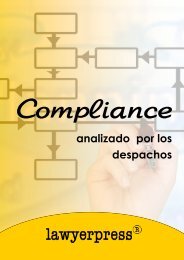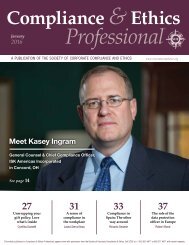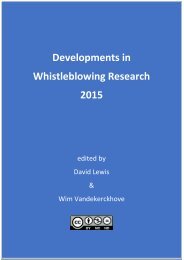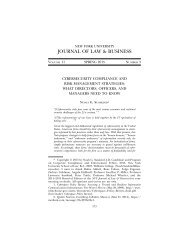AUDIT ANALYTICS AUDIT
x8YaD9
x8YaD9
- No tags were found...
Create successful ePaper yourself
Turn your PDF publications into a flip-book with our unique Google optimized e-Paper software.
<strong>AUDIT</strong> <strong>ANALYTICS</strong> AND CONTINUOUS <strong>AUDIT</strong>:LOOKING TOWARD THE FUTURE<br />
ABRIEF HISTORY OF <strong>AUDIT</strong>ING IN THE<br />
UNITED STATES<br />
Although auditing procedures have been relied upon for many years, the<br />
formal practice of auditing has been in existence for a relatively short<br />
period. In addition, emphasis has historically been placed on a periodic,<br />
backward-looking approach whereby key events and activities are often<br />
identified long after their occurrence or simply undetected. Given that<br />
recent developments and technologies facilitated a movement away from<br />
the historical paradigm and toward a more proactive approach, it is<br />
essential that auditors understand what the future audit entails and how<br />
they might begin to envision a logical progression to such a state. To<br />
enhance this comprehension, it is advisable to consider how auditing has<br />
evolved from its formal beginnings in the early twentieth century.<br />
The Industrial Revolution and the resulting explosion in growth of<br />
business activity led to widespread adoption of auditing methods. The<br />
railroads, in their efforts to report and control costs, production, and<br />
operating ratios, were major catalysts in the development of the<br />
accounting profession within the United States (Chandler 1977).<br />
Specifically, firms became aware of the need for mechanisms of fraud<br />
detection and financial accountability, and investors increasingly relied<br />
upon financial reports as corporations began to participate in the stock<br />
market. Although these issues prompted an expansion in the use of<br />
accounting and auditing mechanisms, it was after the stock market crash<br />
of 1929 that auditing became an obligatory process in the United States.<br />
In particular, the Securities and Exchange Act of 1934 created the<br />
Securities and Exchange Commission (SEC). Among other<br />
responsibilities, the SEC was initially given authority for the<br />
promulgation of accounting standards as well as auditor oversight<br />
functions. In addition, the SEC was required to enforce the mandate that<br />
publicly traded U.S. companies submit various periodic reports to the<br />
agency in a timely fashion. To assist the SEC with ensuring that these<br />
reports were created in accordance with generally accepted accounting<br />
principles (GAAP), public accounting firms were eventually required to<br />
provide certain assurances about the information.<br />
Many of the audit practices existing during the period that immediately<br />
followed were not conducted independently and, instead, simply relied<br />
upon information from management personnel. Furthermore,<br />
refinements of audit standards generally consisted of reactionary<br />
measures that occurred in response to significant negative business<br />
events. For example, audit tasks such as physical inspection of<br />
inventories and confirmation of receivables were optional until<br />
fraudulent activities were uncovered at McKesson & Robbins in 1939. As<br />
72


